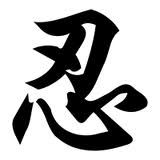“Be the change you wish to see in the world” is an often fictional quoted attributed to Ghandi. Ghandi's original quote is, “If we could change ourselves, the tendencies in the world would also change. As a man changes his own nature, so does the attitude of the world change towards him. … We need not wait to see what others do.” Even if it is paraphrased or misquoted it still has some value to how we live our lives as not only martial artist, but human beings.
As martial artist we live our lives by ichigon. Ichigon directly translates as "say one thing" but is loosely meant to mean do what you say and say what you do or in other words integrity. If we want the class or the dojo to progress or for the students to get better, the first person we need to look at is ourselves (students and teachers alike). Are we living the Way? Are we the change we seek in others first? Saying is one thing but doing is quite another. You want things to get better? Change yourself first.
For teachers, please remember there is no such thing as bad students, only bad teachers. Therefore, be the change you want to see in others.
---------------------------------------------- Day 4 update: The challenge still doesn't seem to be that difficult. It just takes a bit of awareness. This day wasn't difficult and I found myself gifted with several opportunities to let someone off the hook. We had intensive and only 11 people came and that posed several opportunities, but the one that sticks with me can as a result of us spending time organizing Sensei's collection of swords. That was a hard to let off the hook moment I have to admit, but isn't that why we are doing this challenge in the first place?
Day 5: Let someone or something off the hook 5 times.







